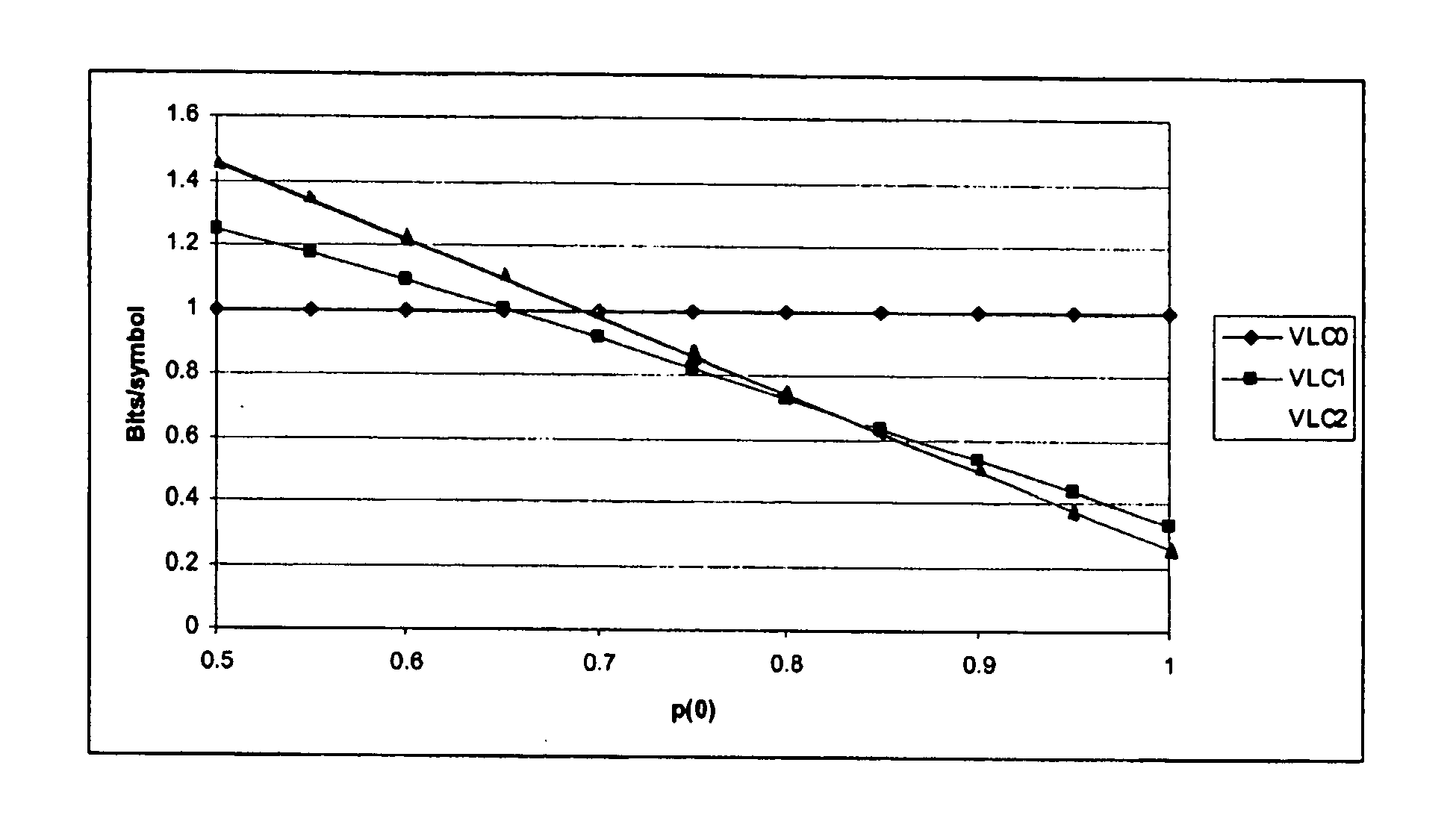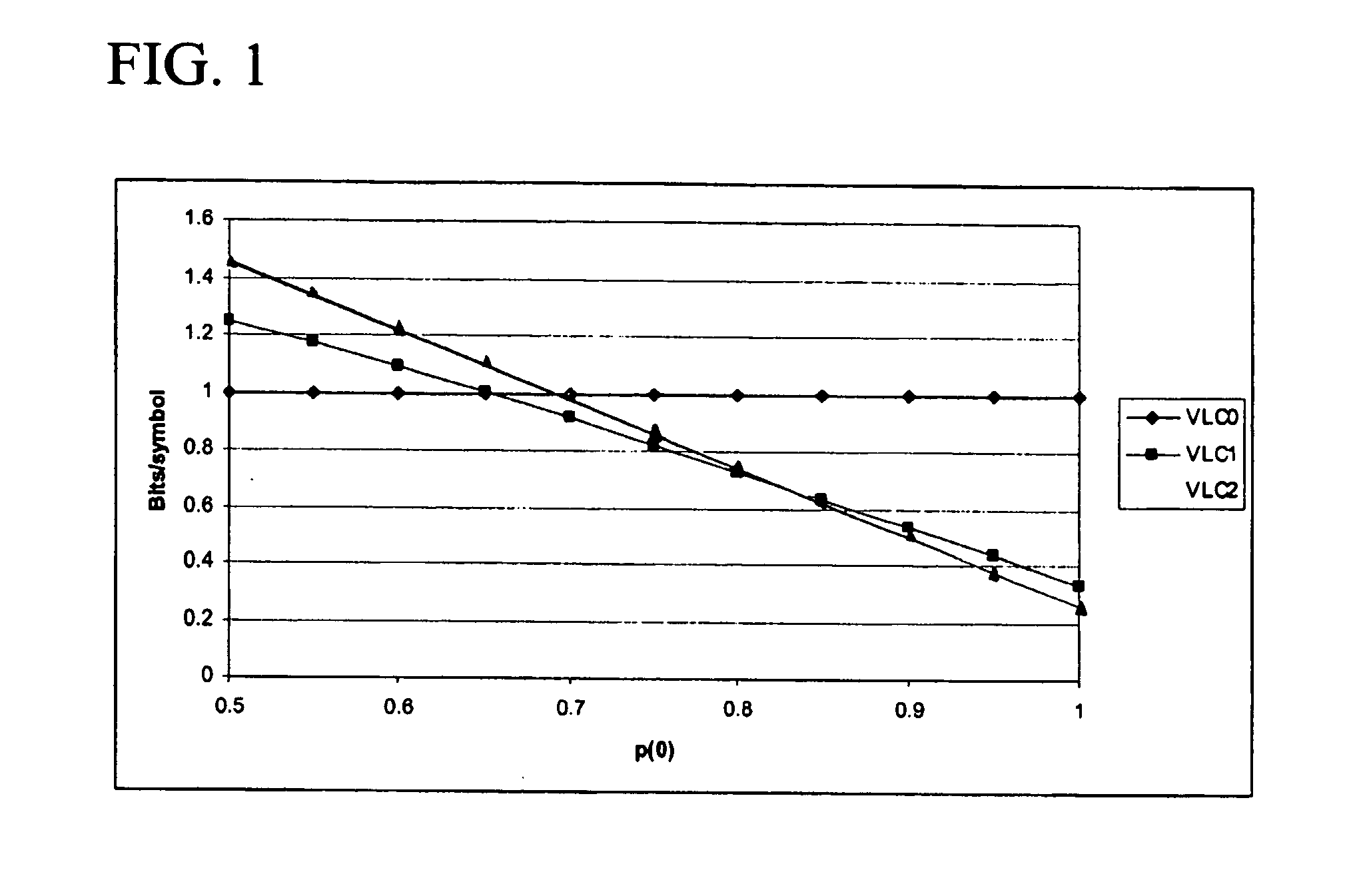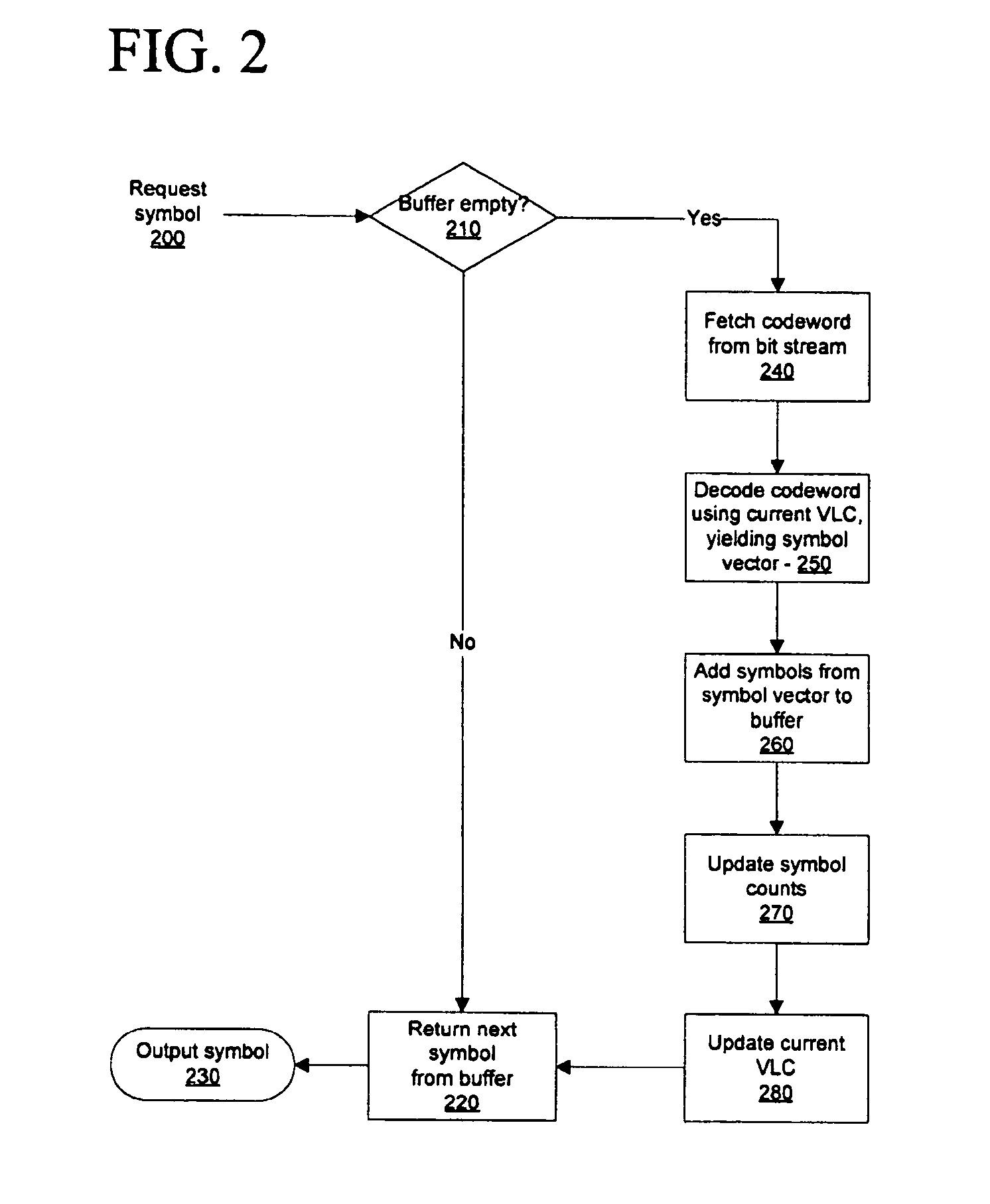Adaptive variable length codes for independent variables
a technology of independent variables and code lengths, applied in the field of channel coding and data compression, can solve problems such as computation efficiency, and achieve the effect of improving coding efficiency and coding efficiency gains
- Summary
- Abstract
- Description
- Claims
- Application Information
AI Technical Summary
Benefits of technology
Problems solved by technology
Method used
Image
Examples
Embodiment Construction
[0025] Generally, quality enhancement information can be divided into three categories: coded block pattern, significance pass, and refinement pass. For the coded block pattern, a “coded flag” is decoded for each macroblock (MB), or for a region of the macroblock, such as an 8×8 region “sub-MB.” The flag only needs to be decoded if the “coded flag” for the corresponding macroblock in all lower layers was zero, i.e. if the MB was not coded in the base layer or other lower layers. It should be understood that, although text and examples contained herein may specifically describe an decoding process, one skilled in the art would readily understand that the same concepts and principles also apply to the corresponding encoding process and vice versa.
[0026] For MBs (or sub-MBs) that are flagged as “coded,” the coded block pattern for each 4×4 block within the MB (or sub-MB) is then decoded. In each 8×8 region of a MB, there are four 4×4 blocks, for example. A binary number can be used to...
PUM
 Login to View More
Login to View More Abstract
Description
Claims
Application Information
 Login to View More
Login to View More - R&D
- Intellectual Property
- Life Sciences
- Materials
- Tech Scout
- Unparalleled Data Quality
- Higher Quality Content
- 60% Fewer Hallucinations
Browse by: Latest US Patents, China's latest patents, Technical Efficacy Thesaurus, Application Domain, Technology Topic, Popular Technical Reports.
© 2025 PatSnap. All rights reserved.Legal|Privacy policy|Modern Slavery Act Transparency Statement|Sitemap|About US| Contact US: help@patsnap.com



